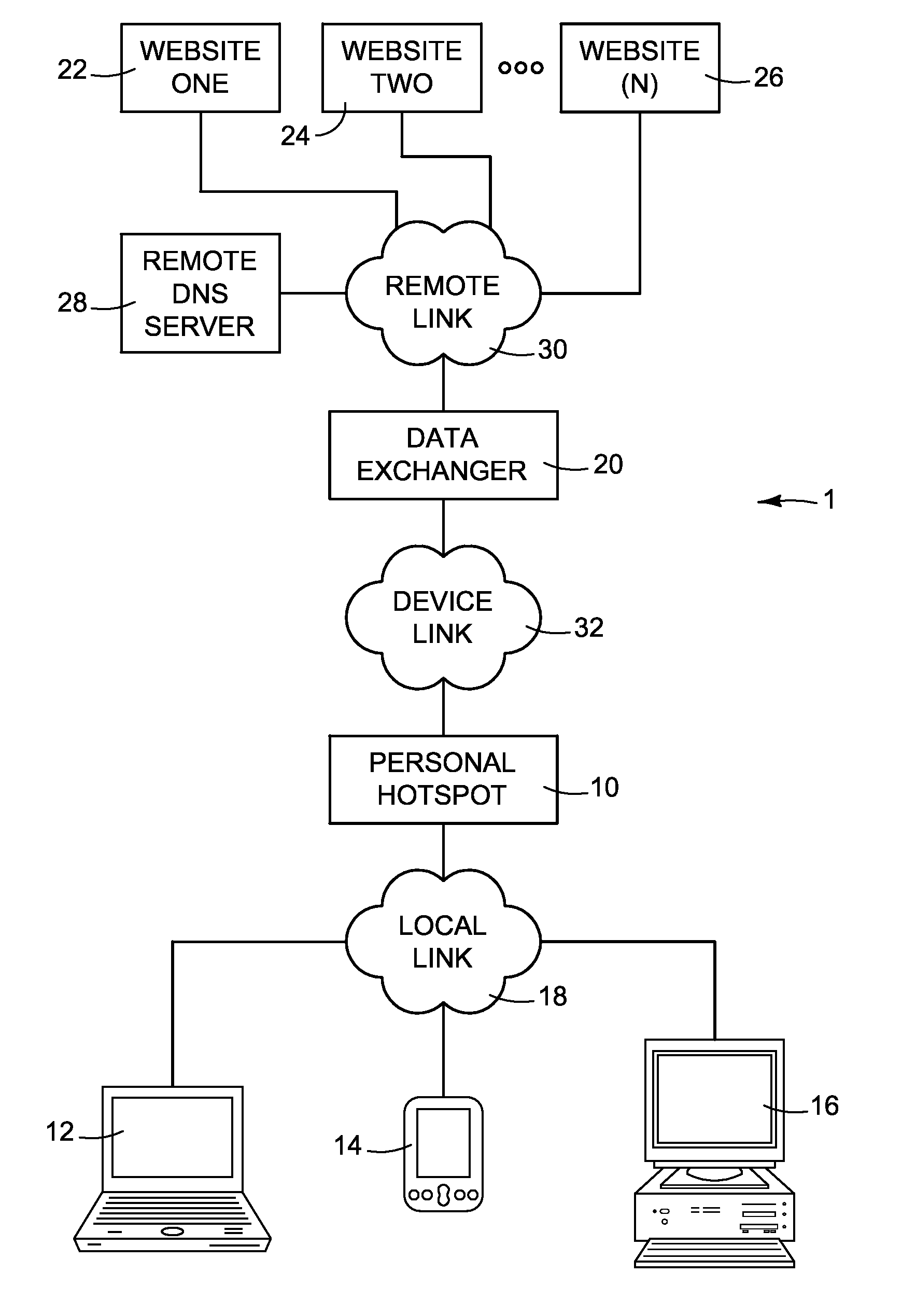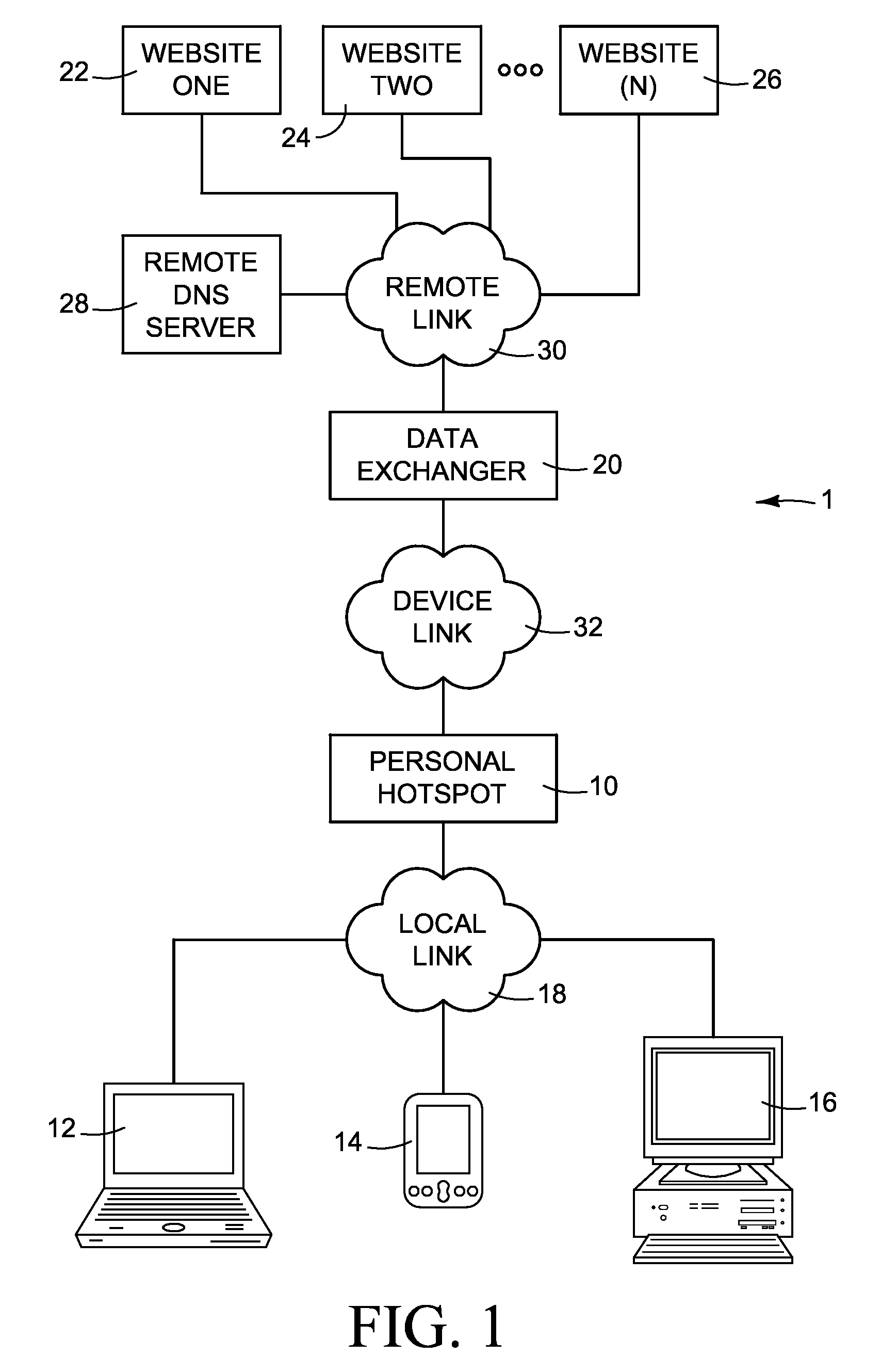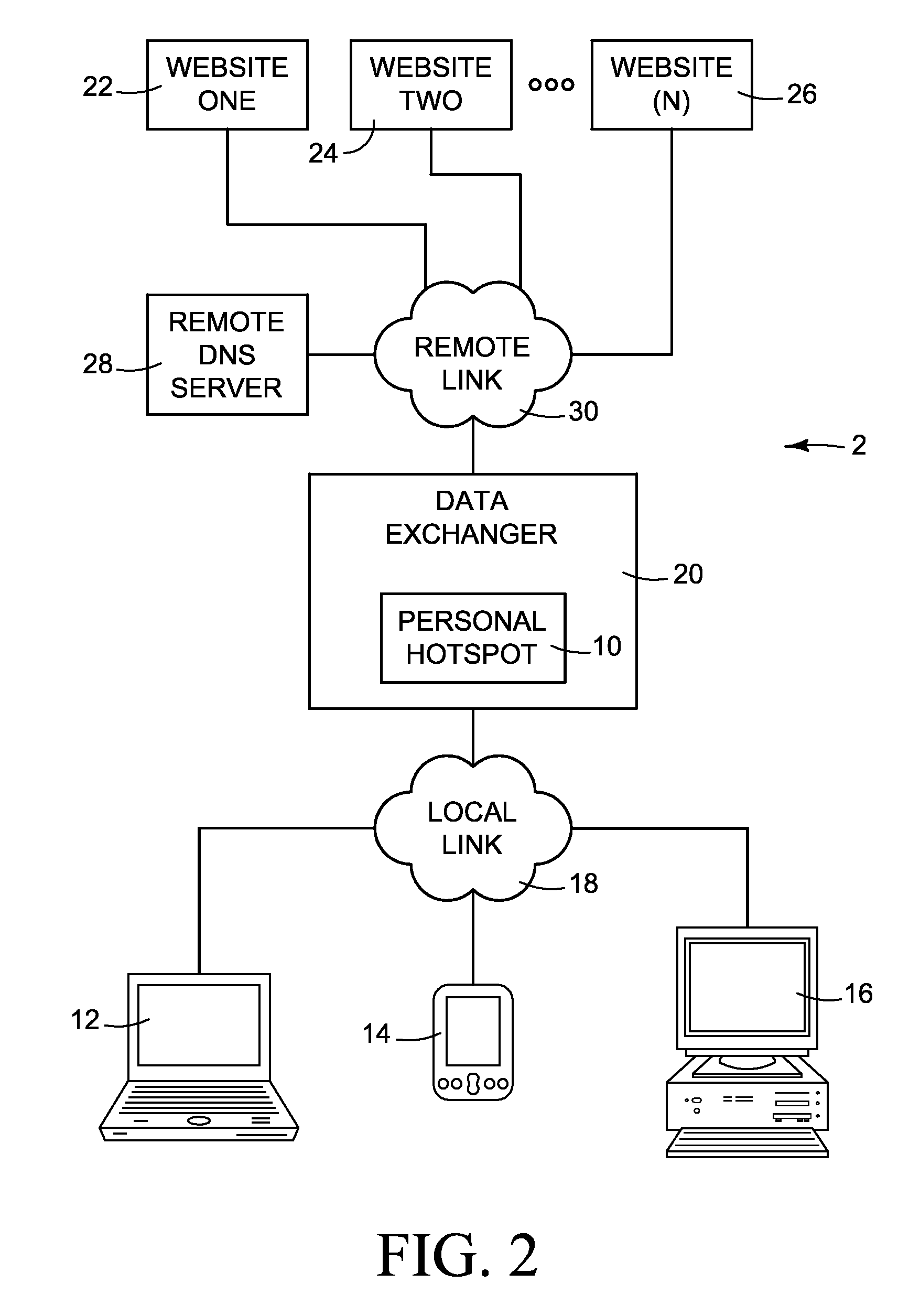Embedded DNS
- Summary
- Abstract
- Description
- Claims
- Application Information
AI Technical Summary
Problems solved by technology
Method used
Image
Examples
Embodiment Construction
[0008] INTRODUCTION: Embodiments of the present invention allow a user to connect to the Internet using a device such as an Internet enabled cellular telephone. Embodiments may be incorporated into a device referred to as a personal hotspot that acts as a router and couples to device capable of internet communication such a cellular telephone. With a personal hotspot, users of computing devices such as lap top computers, desktop computers, and personal digital assistants (PDAs) can access the internet through the data capabilities of the cellular telephone. The combination of the personal hotspot and the Internet enabled cellular telephone can create an internet-connected wireless network anywhere that there is cellular data coverage.
[0009] The user's Internet access is dependent upon an active link between the personal hotspot and an active link between the cellular telephone and the Internet. Typically, a user accesses the Internet using a browser. A conventional browser, when co...
PUM
 Login to View More
Login to View More Abstract
Description
Claims
Application Information
 Login to View More
Login to View More - R&D
- Intellectual Property
- Life Sciences
- Materials
- Tech Scout
- Unparalleled Data Quality
- Higher Quality Content
- 60% Fewer Hallucinations
Browse by: Latest US Patents, China's latest patents, Technical Efficacy Thesaurus, Application Domain, Technology Topic, Popular Technical Reports.
© 2025 PatSnap. All rights reserved.Legal|Privacy policy|Modern Slavery Act Transparency Statement|Sitemap|About US| Contact US: help@patsnap.com



